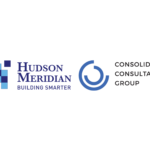How Sustainable Building Design Can Enhance Your Property’s Value
Outline
Introduction
Sustainable building design is increasingly recognized as a crucial factor in enhancing property value. By integrating energy-efficient systems, selecting sustainable materials, and achieving green certifications, buildings can offer long-term savings, environmental benefits, and a higher market value. This article explores the principles of sustainable building design and how they can add value to your property.
Overview of Sustainable Building Design
Sustainable building design focuses on reducing the environmental impact of buildings through energy efficiency, resource conservation, and the use of eco-friendly materials. These designs not only contribute to environmental sustainability but also offer economic benefits, such as reduced operational costs and increased property value. Sustainable design is achieved through a holistic approach that considers the entire lifecycle of a building, from construction to operation and eventual decommissioning.
Key Design Principles for Sustainability
Energy Efficiency
Energy efficiency is a cornerstone of sustainable building design. By incorporating energy-efficient systems such as advanced HVAC systems, high-performance insulation, and energy-efficient windows, buildings can significantly reduce energy consumption and operational costs. Additionally, the integration of renewable energy sources, such as solar panels and wind turbines, further enhances a building's energy efficiency and sustainability.
Material Selection
The selection of sustainable materials is another critical aspect of sustainable building design. Materials that are durable, low in toxicity, and sourced from renewable or recycled resources contribute to the overall sustainability of a building. Choosing materials that are locally sourced and have low environmental impact can also reduce the carbon footprint associated with construction.
Green Building Certifications
Achieving green building certifications, such as LEED (Leadership in Energy and Environmental Design) or BREEAM (Building Research Establishment Environmental Assessment Method), is a testament to a building's sustainability. These certifications assess various aspects of a building's design, construction, and operation, ensuring that it meets high standards for environmental performance. Certified buildings often command higher market value and attract environmentally conscious tenants or buyers.
Benefits of Sustainable Building Design
Sustainable building design offers numerous benefits, including reduced operational costs, improved occupant health and comfort, and increased property value. By incorporating energy-efficient systems and sustainable materials, buildings can achieve significant cost savings over their lifespan. Additionally, the environmental benefits of sustainable design, such as reduced greenhouse gas emissions and resource conservation, contribute to a building's overall value.
Best Practices for Sustainable Design
To achieve the best outcomes in sustainable building design, it's essential to follow best practices such as early integration of sustainability goals, comprehensive lifecycle assessment, and collaboration with experienced professionals. These practices help ensure that sustainability is considered at every stage of the project, from design and construction to operation and maintenance.
Expert Insights
Experts at CCG emphasize the importance of a holistic approach to sustainable building design. By considering the entire lifecycle of a building and integrating sustainability goals from the outset, project teams can create buildings that are not only environmentally responsible but also economically viable. Our experts recommend ongoing monitoring and adjustment of building systems to maintain and enhance sustainability over time.
Conclusion
Sustainable building design is a powerful tool for enhancing property value while contributing to environmental sustainability. By focusing on energy efficiency, selecting sustainable materials, and achieving green certifications, property owners can realize significant economic benefits and reduce their environmental impact. Contact our team at CCG to learn more about how we can help you achieve your sustainable building design goals.
Frequently Asked Questions
Sustainable building design enhances property value by reducing operational costs, improving occupant comfort, and attracting environmentally conscious tenants or buyers. Buildings that achieve high levels of sustainability are often more desirable in the market and can command higher prices.
Key principles of sustainable building design include energy efficiency, sustainable material selection, and achieving green building certifications. These principles focus on reducing the environmental impact of buildings while enhancing their economic and functional performance.
CCG offers comprehensive sustainable building design services, including energy efficiency planning, material selection, and assistance with green building certifications. Our team of experts works closely with clients to create buildings that are environmentally responsible and economically viable.
Get in Touch
If you're interested in enhancing your property's value through sustainable building design, get in touch with us today. Our team at CCG is ready to assist you with your sustainable design needs.













